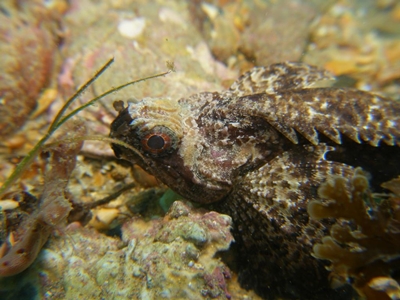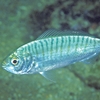General Description
Body elongate, compressed; head rounded to squarish, with a deep groove or notch on top behind eyes; a large erectile spine below eye; spinous part of dorsal fin very long; pectoral fins large. Colour variable, often mottled tan above with lower side of head dark; a dark band across rear part of the body; tail base and rear of dorsal and anal fins pale; small black spots and creamy white patches scattered on body and fins; eye ringed with red. To 19 cm.
Biology
These bizarre, nocturnal ambush predators are very well camouflaged and rarely seen. Their fin spines are venomous.
Habitat
Rocky reefs in bays and along the coast, often under jetties and piers, in depths of 3-22 m.
Reefs
Distribution guide
Southern Australia.
Species Group
Depth
Water Column
Max Size
19 cm
Harmful
Venomous spines can inflict mild to severe pain.
Commercial Species
No
Global Dispersal
Native to Australia
Conservation Status
- DSE Advisory List : Not listed
- EPBC Act 1999 : Not listed
- IUCN Red List : Not listed






